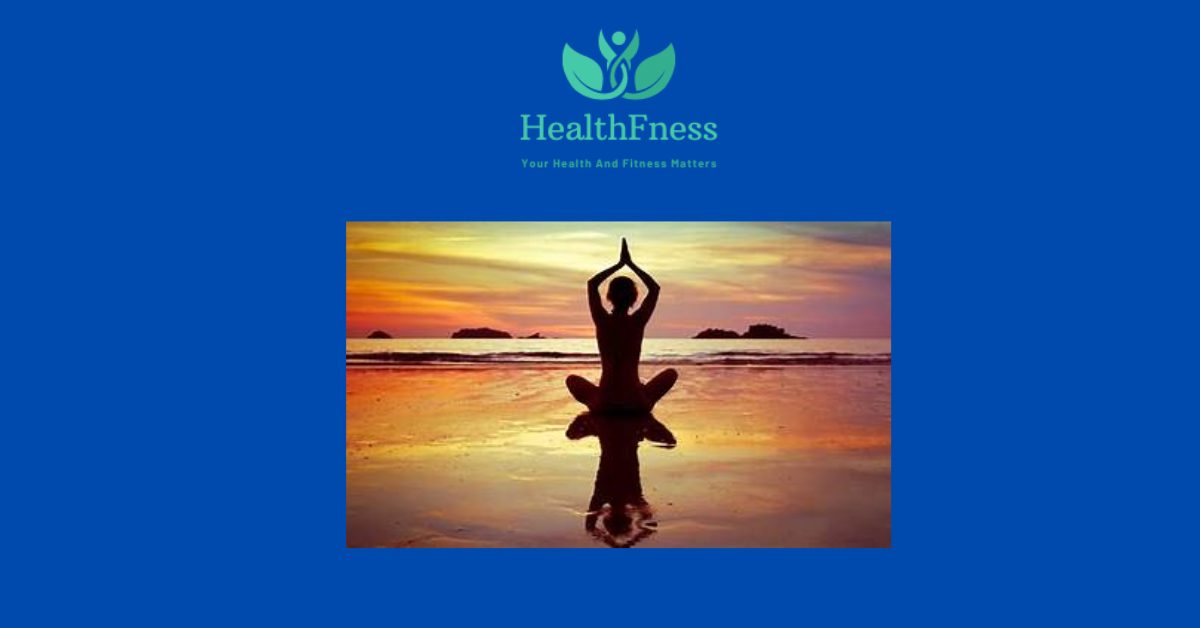In the relentless pace of modern life, it’s easy to feel overwhelmed. Juggling work deadlines, family responsibilities, and the constant hum of digital notifications can leave us feeling drained, anxious, and disconnected from ourselves. We often search for an anchor in the storm, a source of stability that doesn’t depend on external circumstances. This anchor is inner strength, a deep well of resilience, calm, and self-belief. But how do we cultivate it? The answer may lie in an ancient practice that gracefully unites mind, body, and breath. This article is your definitive guide to using yoga for inner strength, offering an evidence-based pathway to transform your mental and emotional well-being from the inside out.
Definition and Overview: Understanding Inner Strength Through the Lens of Yoga
When we talk about “inner strength,” we’re not referring to brute force or sheer willpower. In the context of yoga, inner strength is a multifaceted quality that encompasses:
- Emotional Resilience: The ability to navigate life’s challenges, setbacks, and stressors without being emotionally derailed.
- Mental Fortitude: The capacity to maintain focus, clarity, and a positive mindset, even under pressure.
- Self-Awareness: A deep understanding of your own thoughts, emotions, and physical sensations without judgment.
- Authenticity: The confidence to live in alignment with your true values and beliefs.
Yoga is uniquely positioned to cultivate these qualities because it is a holistic practice. It’s not just a workout; it’s a “work-in.” It systematically addresses the interconnected layers of our being through three primary tools:
- Asana (Physical Postures): The poses challenge the body, building physical strength and stability. Holding a challenging pose teaches us to remain calm and steady under physical stress, a skill that translates directly to handling emotional stress.
- Pranayama (Breath Control): The breath is the bridge between the body and mind. By consciously regulating our breathing, we can directly influence our nervous system, shifting from a state of stress to one of calm and control.
- Dhyana (Meditation & Mindfulness): Yoga encourages a state of focused awareness. This practice of observing our thoughts without getting entangled in them builds mental discipline and emotional equanimity.
Through the consistent practice of integrating these three elements, yoga forges a profound connection between a strong, stable body and a calm, resilient mind. You learn that true strength isn’t about being rigid or unbreakable, but about being flexible, grounded, and adaptable.
Causes and Background: Why We’re Losing Our Inner Strength
To understand why a practice like yoga is so vital today, we must first recognize the forces that erode our inner strength. Our modern environment is rife with stressors that constantly tax our nervous system.
The primary culprit is chronic stress. Our bodies are equipped with a sophisticated “fight-or-flight” response, managed by the sympathetic nervous system. When faced with a perceived threat, our brains trigger a release of hormones like adrenaline and cortisol. This response is life-saving in a true emergency, but our bodies can’t distinguish between a physical threat (like a predator) and a psychological one (like a work deadline or financial worry).
In today’s world, we are in a near-constant state of low-grade “fight-or-flight.” This leads to chronically elevated cortisol levels, which have been linked to a host of health problems, including:
- Anxiety and depression
- Sleep disturbances
- Weakened immune function
- Digestive issues
- Increased risk of heart disease
This constant activation of our stress response leaves us feeling depleted, reactive, and fragile. Our capacity for thoughtful response is diminished, replaced by knee-jerk reactions. It’s in this depleted state that we seek external validation and temporary fixes, moving further away from our own innate source of strength. Yoga offers a direct antidote, teaching us how to consciously activate the parasympathetic nervous system, our “rest-and-digest” mode, to restore balance and rebuild our inner resources.
Benefits and Importance: The Transformative Power of a Consistent Yoga Practice
Incorporating yoga into your life offers a wealth of evidence-backed benefits that directly contribute to building inner strength. These advantages are not just felt subjectively; they are measurable changes in our physiology and psychology.
Physiological Benefits: Regulating Your Nervous System
The most profound way yoga builds inner strength is by retraining your nervous system. By shifting focus to the breath and body, you learn to down-regulate the stress response.
- Lowers Cortisol: Numerous studies have shown that a regular yoga practice can significantly reduce levels of the stress hormone cortisol. A 2020 meta-analysis published in Psychoneuroendocrinology confirmed that mind-body practices, including yoga, are effective at modulating the stress response system.
- Activates the Parasympathetic Nervous System: Slow, deep breathing, a cornerstone of yoga, stimulates the vagus nerve. This nerve is the main highway of the parasympathetic nervous system, responsible for calming the body, lowering heart rate, and promoting relaxation.
- Enhances Interoception: Interoception is the sense of the internal state of your body. Yoga sharpens this sense, helping you become more attuned to subtle signals of stress or unease before they escalate. This enhanced body awareness is critical for proactive emotional self-regulation.
Psychological Benefits: Rewiring Your Mind
Yoga is a powerful tool for building mental fortitude and a more positive psychological outlook.
- Increases Self-Efficacy: Successfully holding a challenging pose like Warrior III or mastering a new balancing posture builds a sense of accomplishment and self-belief. This confidence, known as self-efficacy, extends beyond the mat into other areas of your life.
- Reduces Symptoms of Anxiety and Depression: A landmark 2019 study from Boston University School of Medicine, published in the Journal of Psychiatric Practice, found that yoga can be an effective adjunctive treatment for major depressive disorder. It works by increasing levels of the neurotransmitter GABA, which is often low in people with anxiety and mood disorders.
- Improves Focus and Concentration: The practice of holding poses (asana), focusing on a visual point (drishti), and following the breath (pranayama) is a form of mindfulness training. This enhances your ability to concentrate and resist distractions in daily life.
Emotional Benefits: Cultivating Equanimity
Inner strength is largely about emotional mastery. Yoga provides a safe space to explore and process emotions.
- Promotes Emotional Regulation: When you’re in a difficult pose and feelings of frustration or impatience arise, yoga teaches you to breathe through the discomfort rather than reacting to it. This practice builds the “muscle” of emotional regulation, allowing you to respond to life’s challenges with more grace and less reactivity.
- Fosters Self-Compassion: Yoga encourages a non-judgmental attitude toward yourself. You learn to accept your body’s limitations on any given day without criticism. This practice of self-compassion is a cornerstone of inner resilience, protecting against the harshness of self-criticism.
Risks and Side Effects: How to Practice Yoga for Inner Strength Safely
While the benefits of yoga are vast, it’s crucial to approach the practice with awareness and respect for your body to avoid injury. Like any form of physical activity, yoga carries some risks if not performed correctly. This awareness is a key part of building trustworthy, sustainable strength.
Common areas of injury include the lower back, wrists, shoulders, and hamstrings, often resulting from pushing too hard, too soon, or with improper alignment.
To ensure a safe and effective practice, follow these essential guidelines:
- Listen to Your Body: This is the most important rule in yoga. Pain is a signal to back off. Distinguish between the discomfort of a muscle stretching and sharp, shooting, or joint pain. Never force a pose.
- Find a Qualified Instructor: Especially when you are starting, learning from an experienced and certified yoga teacher is invaluable. They can provide personalized alignment cues and modifications to ensure you are practicing safely.
- Modify Poses: There is no shame in using props like blocks, straps, or blankets. They are tools to help you find the correct alignment and get the full benefit of a pose without straining. A good teacher will offer modifications for all levels.
- Warm-Up Properly: Never jump into deep stretches or complex poses with cold muscles. Start your practice with gentle movements like Cat-Cow or Sun Salutations to warm up your joints and muscles.
- Consult Your Doctor: If you have pre-existing health conditions such as high blood pressure, glaucoma, sciatica, or are pregnant, talk to your healthcare provider before beginning a yoga practice. They can advise you on which poses to avoid or modify.
Remember, the goal of yoga for inner strength is not to achieve the “perfect” pose but to cultivate a deeper connection with and respect for your body. Pushing through pain is an act of ego, not strength.
Latest Studies and Findings: The Science Behind Yoga and Resilience
The scientific community’s interest in yoga has grown exponentially, and recent research continues to validate its profound effects on mental and physical health. Staying current with these findings helps us understand how yoga works to build inner strength.
- Yoga and Brain Structure (2021): A neuroimaging study published in Brain Plasticity in 2021 reviewed evidence showing that long-term yoga practitioners have structural differences in brain regions associated with interoception, self-regulation, and attention. Specifically, practitioners showed increased gray matter volume in the insular cortex, a key area for body awareness and emotional processing. This suggests yoga can physically reshape the brain to be more resilient.
- Yoga for Stress Resilience in High-Pressure Jobs (2022): Research published in the Journal of Occupational Health Psychology in 2022 explored the effects of a yoga-based intervention on employees in high-stress occupations. The results showed that participants in the yoga group reported significantly lower levels of burnout and secondary traumatic stress, along with higher levels of compassion satisfaction, demonstrating yoga’s power to build resilience in demanding environments.
- The Impact of Breathing on Anxiety (2023): A study from Stanford University, published in Cell Reports Medicine in January 2023, compared the effects of different breathing exercises on mood and physiological arousal. It found that “Cyclic Sighing” (a breathing pattern very similar to certain pranayama techniques) was the most effective method for improving mood and reducing respiratory rate, providing a powerful, accessible tool for immediate anxiety relief.
- Yoga’s Effect on Cellular Aging (2022): A compelling review in the journal Oxidative Medicine and Cellular Longevity (2022) examined how yoga and meditation impact markers of cellular aging, such as telomere length and telomerase activity. The findings suggest these practices can reduce oxidative stress and inflammation, potentially slowing the aging process at a cellular level and contributing to long-term health and resilience.
These studies move our understanding of yoga from anecdotal to evidence-based, confirming that the practice is a powerful, science-backed modality for enhancing mental and physical fortitude.
Comparison Table: Choosing a Yoga Style for Inner Strength
Not all yoga styles are created equal, and the best one for you depends on your personality, physical condition, and what you hope to achieve. This table compares several popular styles to help you find your perfect match for cultivating inner strength.
| Yoga Style | Pace & Intensity | Primary Focus | How It Builds Inner Strength | Best For |
|---|---|---|---|---|
| Hatha Yoga | Slow & Gentle | Basic postures, alignment, and breath awareness. Poses are held for several breaths. | Builds a solid foundation of body awareness and stability. The slower pace allows for mindfulness and focus. | Beginners, individuals seeking a less strenuous practice, or those wanting to focus on the fundamentals. |
| Vinyasa Yoga | Moderate to Fast & Flowing | Linking breath to movement in a continuous flow. Often creative and dance-like. | Develops mental focus and resilience by requiring you to stay present and coordinated through dynamic sequences. Builds physical stamina. | Those who enjoy a more dynamic, cardiovascular workout and don’t mind a faster pace. |
| Ashtanga Yoga | Fast & Rigorous | A specific, fixed sequence of postures that is physically demanding. | Forges immense discipline, determination, and mental fortitude through repetition and consistency. Builds significant physical strength. | Individuals seeking a challenging, structured, and disciplined practice. Not recommended for absolute beginners without guidance. |
| Yin Yoga | Very Slow & Passive | Holding passive floor poses for 3-5 minutes or longer to target deep connective tissues. | Teaches stillness, patience, and the ability to sit with discomfort. A deep meditative practice for emotional release and resilience. | People looking to increase flexibility, calm the nervous system, and practice mindfulness and surrender. Excellent for balancing active lifestyles. |
| Restorative Yoga | Completely Passive | Using props (bolsters, blankets, blocks) to completely support the body in gentle, relaxing poses. | Directly activates the parasympathetic nervous system, teaching the body and mind how to truly rest and recover. Rebuilds energy reserves. | Anyone suffering from stress, burnout, fatigue, or injury. A powerful tool for deep relaxation and nervous system healing. |
Practical Tips: Your Guide to Building Inner Strength with Yoga
Ready to step onto the mat? This section provides a practical, step-by-step guide to the key components of a yoga practice designed to build inner strength.
Part 1: Foundational Poses (Asanas) for Inner Strength
These poses are renowned for their ability to cultivate grounding, stability, and confidence. Focus on the feeling of the pose, not just its shape.
1. Mountain Pose (Tadasana)
The Foundation of Stillness and Power.
This seemingly simple pose is the blueprint for all other standing poses. It teaches you to be grounded, stable, and powerfully present.
How to do it: Stand with your feet together or hip-width apart. Press down firmly through all four corners of your feet. Engage your leg muscles without locking your knees. Lengthen your tailbone toward the floor. Draw your shoulder blades down your back and open your chest. Let your arms rest by your sides, palms facing forward. Stand tall and breathe deeply. Feel the connection between your feet and the earth.
2. Warrior I (Virabhadrasana I)
The Embodiment of Courage and Focus.
This pose embodies the spirit of a peaceful warrior, strong, determined, and focused on a single point.
How to do it: From Mountain Pose, step your left foot back about 3-4 feet. Turn your left foot out to a 45-degree angle, grounding the outer edge of the foot. Bend your right knee so it is directly over your ankle. Keep your hips squared as much as possible to the front of the mat. Inhale and raise your arms overhead, palms facing each other or touching. Gaze forward or slightly up. Hold for 5 deep breaths, feeling both grounded and uplifted.
3. Warrior II (Virabhadrasana II)
Cultivating Steadfastness and Presence.
Warrior II opens the hips and builds stamina. It requires you to be firm in your foundation while extending your energy outward.
How to do it: From Warrior I, open your hips and torso to face the side of the mat. Extend your arms parallel to the floor, one reaching forward and one back. Your gaze (drishti) is soft over your front fingertips. Keep the front knee bent over the ankle and the back leg strong and straight. Hold for 5-8 breaths, feeling the stability in your legs and the expansion across your chest.
4. Tree Pose (Vrksasana)
Finding Balance and Concentration.
This classic balancing pose is a direct metaphor for finding stability amidst life’s wobbles. It requires intense focus and a calm mind.
How to do it: Stand in Mountain Pose and shift your weight onto your left foot. Place the sole of your right foot on your left inner ankle, calf, or thigh (avoid the knee joint). Bring your hands to your heart in a prayer position or extend them overhead. Find a non-moving spot in front of you to focus your gaze. Hold for as long as you can with steady breath, then switch sides.
5. Chair Pose (Utkatasana)
Building Fierce Determination and Endurance.
Often called “Fierce Pose,” this asana builds heat and challenges your mental and physical endurance. It teaches you to stay present and breathe through intensity.
How to do it: Stand with your feet together or hip-width apart. Inhale and raise your arms overhead. Exhale and bend your knees, sinking your hips down and back as if sitting in a chair. Keep your weight in your heels and your chest lifted. Hold for 5-8 breaths, embracing the challenge.
Part 2: The Power of Breath (Pranayama)
Your breath is your most powerful tool for managing your inner state. Practice these techniques on their own or integrated into your asana practice.
1. Diaphragmatic (Belly) Breathing
This is the foundation of all pranayama. It calms the nervous system instantly. Lie on your back with one hand on your belly and one on your chest. As you inhale, let your belly expand like a balloon. As you exhale, feel your belly gently fall. Keep the chest relatively still. Practice for 5 minutes daily.
2. Box Breathing (Sama Vritti)
A simple yet potent technique used by Navy SEALs to stay calm under pressure. It balances the nervous system and focuses the mind.
The Pattern:
- Inhale through your nose for a count of 4.
- Hold your breath for a count of 4.
- Exhale through your nose for a count of 4.
- Hold the breath out for a count of 4.
Repeat this cycle for 5-10 rounds.
Part 3: Cultivating a Mindful Practice
The “how” of your practice is more important than the “what.”
- Set an Intention: Begin each practice by setting an intention (sankalpa). It could be “I will be patient with myself” or “I am strong and stable.”
- Focus on Sensation: Instead of judging how your pose looks, bring your attention to how it feels. Notice the stretch, the effort, the grounding. This is mindfulness in action.
- Be Consistent, Not Perfect: A 15-minute practice done four times a week is far more beneficial than one 90-minute class done sporadically. Consistency is what rewires your brain and body for resilience.
FAQs: Your Questions on Yoga for Inner Strength Answered
- How often should I practice yoga to build inner strength?
- Consistency is more important than duration. Aim for 3-5 sessions per week, even if they are only 20-30 minutes long. This regularity helps create lasting neurological and physiological changes.
- Can I do yoga for inner strength if I’m a complete beginner?
- Absolutely. Yoga is for every body. Start with a beginner-level Hatha or gentle flow class. The poses mentioned above, like Mountain, Warrior I, and Tree Pose, are excellent for beginners. Always listen to your body and don’t push into pain.
- What’s more important for inner strength: the physical poses or the breathing?
- They are deeply interconnected and equally important. The poses (asanas) build physical resilience and teach you to handle stress in your body. The breath (pranayama) directly regulates your nervous system and calms your mind. The true magic happens when you synchronize them, using the breath to guide you through the physical challenges.
- How long will it take to see results?
- You will likely feel calmer and more centered after your very first session. More profound changes in resilience and self-awareness build over time. Most people report significant shifts in their stress levels and mindset within 8-12 weeks of consistent practice.
- Do I need to be flexible to start yoga?
- This is a common myth. Saying you’re not flexible enough for yoga is like saying you’re too dirty to take a shower. Yoga is the practice that builds flexibility. Your current level of flexibility is your perfect starting point.
- Is yoga a religious practice?
- While yoga has its roots in ancient Indian philosophy, it is not a religion. It is a system of tools and techniques for well-being. People from all religious and non-religious backgrounds practice yoga for its physical, mental, and emotional benefits. The practice can be adapted to align with your personal beliefs.
Conclusion
Inner strength is not something you are born with or without; it is a quality that can be intentionally cultivated. By stepping onto the yoga mat, you are stepping into a laboratory for self-discovery and resilience. Each pose, each breath, and each moment of mindful attention is an opportunity to strengthen your connection to yourself. The practice of yoga for inner strength teaches you to be your own anchor, to find stability not from a world in constant flux, but from the unwavering center within. Start your journey today, and discover the unshakable strength, peace, and confidence that already reside within you, waiting to be awakened.
References
- Pascoe, M. C., Thompson, D. R., & Ski, C. F. (2020). Yoga, mindfulness-based stress reduction and stress-related physiological measures: A meta-analysis. Psychoneuroendocrinology, 122, 104883. https://pubmed.ncbi.nlm.nih.gov/33126021/
- Streeter, C. C., Gerbarg, P. L., Whitfield, T. H., Owen, L., Johnston, J., Silveri, M. M., … & Brown, R. P. (2019). Treatment of Major Depressive Disorder with Iyengar Yoga and Coherent Breathing: A Randomized Controlled Dosing Study. Journal of Psychiatric Practice®, 25(4), 285-298. (While the article is paywalled, summaries and citations are widely available confirming the link between yoga and GABA levels).
- Gothe, N. P., Khan, I., Hayes, J., Erlenbach, E., & Damoiseaux, J. S. (2021). Yoga Effects on Brain Health: A Systematic Review of the Current Literature. Brain Plasticity, 7(1), 105-122. https://www.ncbi.nlm.nih.gov/pmc/articles/PMC8678685/
- Rau, H. K., & Eby, L. T. (2022). The efficacy of a yoga-based intervention for promoting resilience and reducing burnout among mental health providers. Journal of Occupational Health Psychology, 27(3), 254–267. https://psycnet.apa.org/record/2022-26154-001
- Balban, M. Y., Neri, E., Kogon, M. M., Weed, L., Nouriani, B., Jo, B., … & Huberman, A. D. (2023). Brief structured respiration practices enhance mood and reduce physiological arousal. Cell Reports Medicine, 4(1), 100895. https://www.cell.com/cell-reports-medicine/fulltext/S2666-3791(22)00474-8
- Tolahunase, M., Sagar, R., & Dada, R. (2022). Yoga and Meditation as a Tool for Ameliorating Oxidative Stress and Cellular Aging. Oxidative Medicine and Cellular Longevity, 2022, 8821612. https://www.ncbi.nlm.nih.gov/pmc/articles/PMC8814725/
- Mayo Clinic Staff. (2022). Yoga: Fight stress and find serenity. Mayo Clinic. https://www.mayoclinic.org/healthy-lifestyle/stress-management/in-depth/yoga/art-20044733

Dr. Mark Jenkins, MD - General Physician (California, USA)
Dr. Mark Jenkins is a board-certified general physician based in the United States, specializing in preventive medicine, nutrition, and lifestyle health. With years of clinical experience in primary care, he is dedicated to helping patients and readers alike make informed, science-based decisions about their well-being.
As a trusted medical reviewer and contributor to Healthfness.com, Dr. Jenkins ensures that all health content meets the highest standards of accuracy, safety, and evidence-based medicine. His expertise bridges modern medical science with practical, everyday wellness strategies, making complex topics approachable for all audiences.
Outside the clinic, Dr. Jenkins is passionate about living the healthy lifestyle he teaches. He enjoys hiking with his dog, experimenting with vegetarian cooking, and exploring the latest health research. He believes that small, consistent lifestyle changes lead to lasting health improvements, and he aims to inspire readers to take proactive steps toward a healthier, happier life.
Explore more of Dr. Jenkins’ evidence-based insights at Healthfness.com



